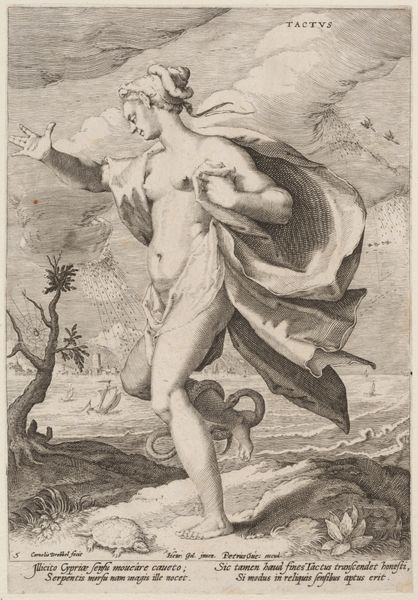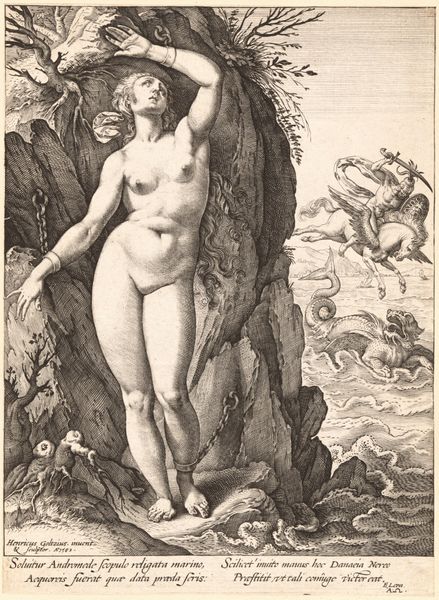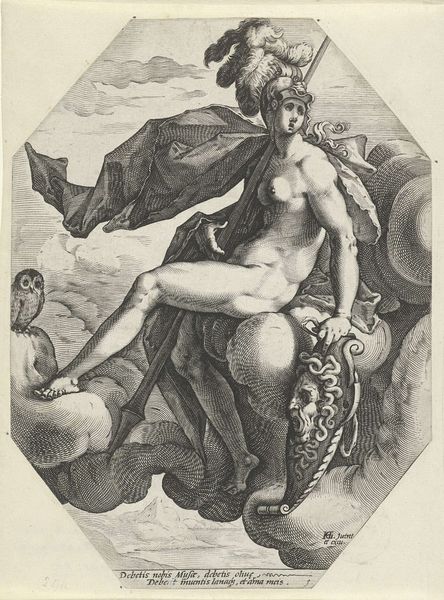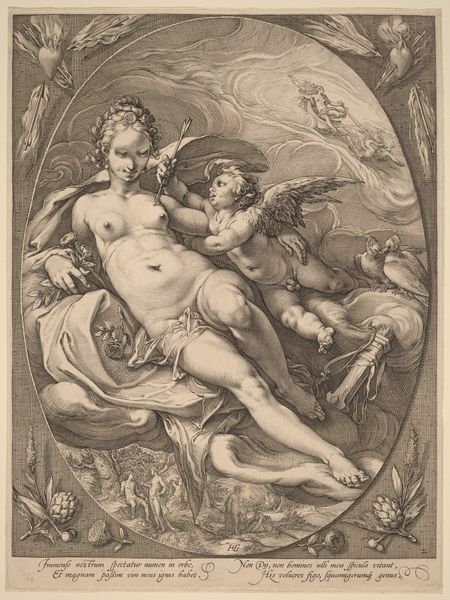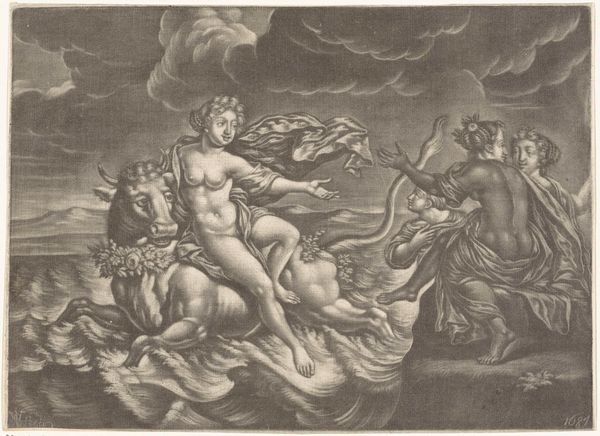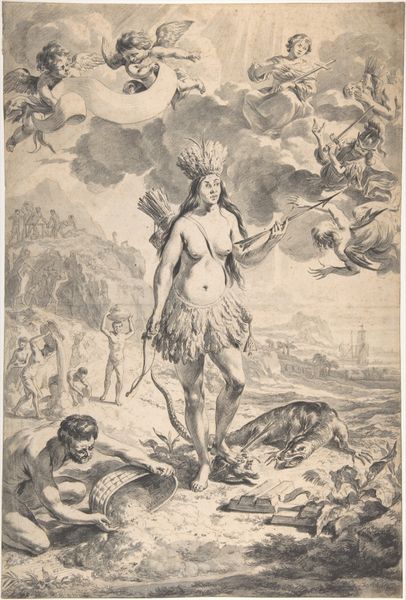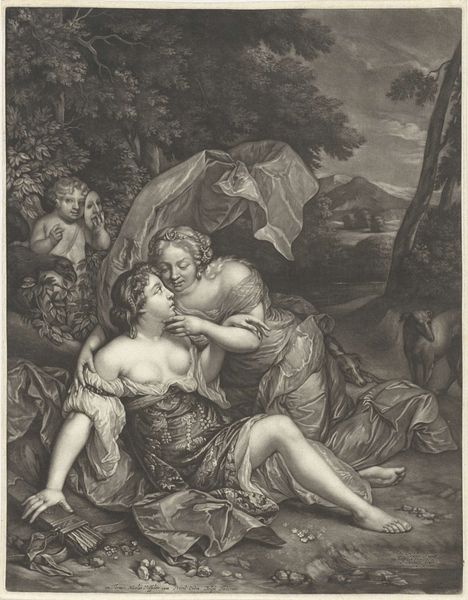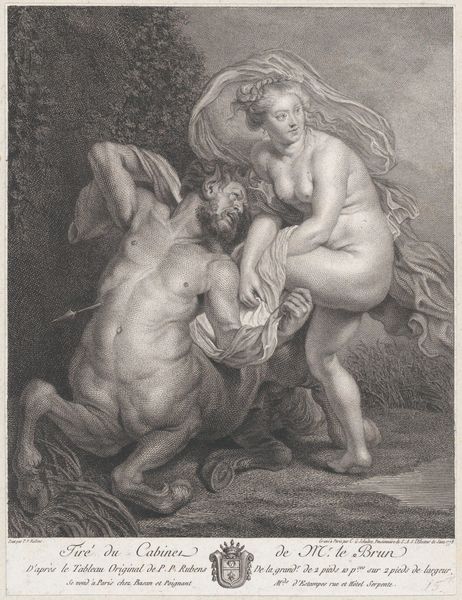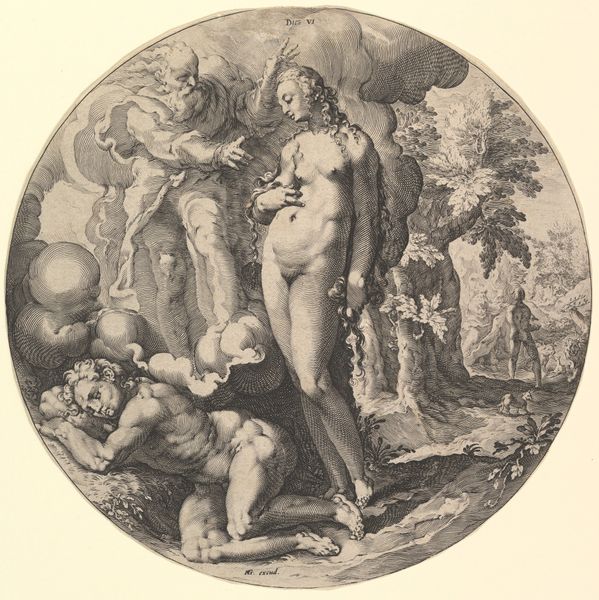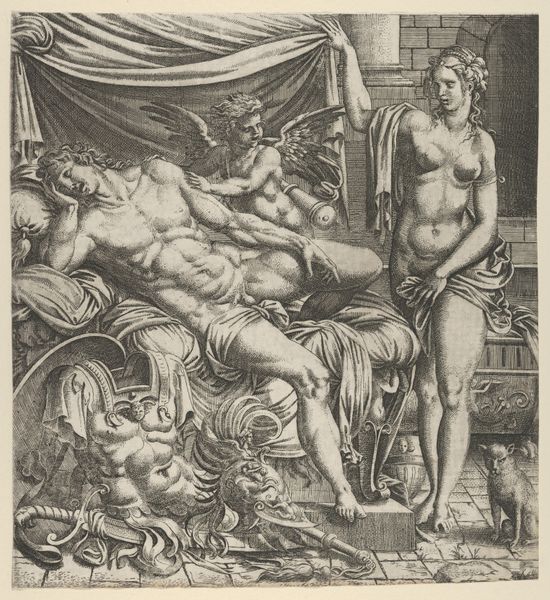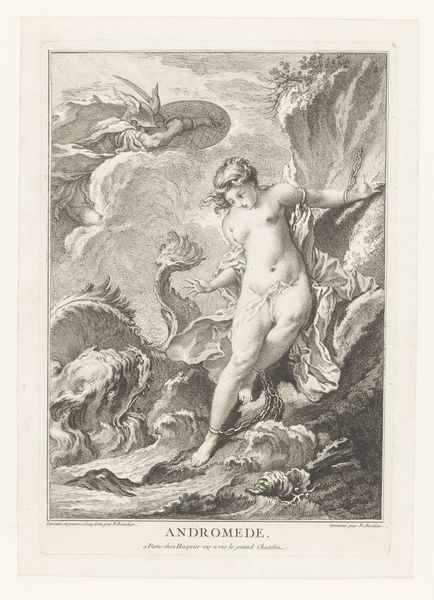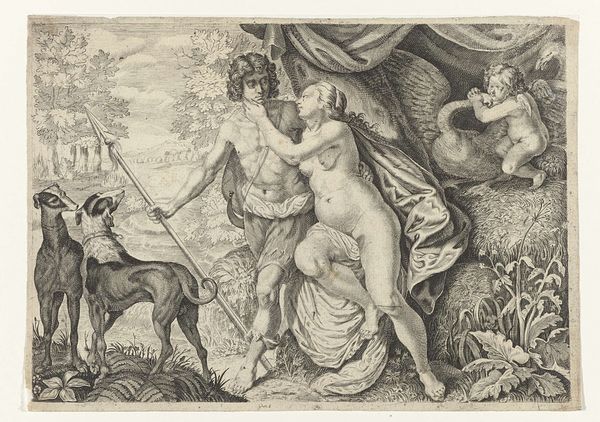
painting, oil-paint
#
gouache
#
allegory
#
painting
#
oil-paint
#
landscape
#
mannerism
#
figuration
#
history-painting
#
nude
Copyright: Public domain
This is Bartholomeus Spranger's interpretation of "Glaucus and Scylla". Spranger, working in the late 16th and early 17th centuries, was deeply influenced by the Mannerist style, which favored drama and emotional intensity. Here, we see the nymph Scylla rejecting the sea god Glaucus. This narrative, drawn from Ovid’s “Metamorphoses,” highlights themes of transformation and unrequited love, common in Renaissance art. Yet Spranger also subtly engages with the gendered dynamics of desire and power. Scylla’s agency in refusing Glaucus challenges traditional representations of women in mythology, who were often portrayed as passive objects of male desire. Glaucus, with his desperate pose and forlorn expression, embodies the pain of rejection. Spranger's work captures a moment of intense emotional conflict, inviting us to reflect on the complexities of love, rejection, and the agency of women within these narratives.
Comments
No comments
Be the first to comment and join the conversation on the ultimate creative platform.
